Something is Wrong with Onions
They are getting less irritating and less pungent, which means they’re losing flavour. That isn’t good.
If God put a gun to your head and said, “Onions or truffles—you can only have one” I would choose onions. The thought of life without Parmigiano Reggiano or chilies is painful to imagine, but if it were them or onions, I’d take onions. Caviar or onions isn’t even a question. I would choose onions over ketchup, honey, sage, cloves, balsamic vinegar, soy sauce or vanilla.
Maybe salt has the edge on onions. And water. And air. Then again, maybe not.
The human species loves onions. Onions are the world’s second largest vegetable crop by volume next only to tomatoes. (I would take onions over tomatoes). Onions feature in some way— raw, sautéed, fried, or caramelized, as a flavour base or a topping—in nearly every cuisine. The average Canadian or American eats about twenty-two pounds of onions per year, about the same as the French and a little more than Italians. The average Turk consumes double that, the average Nigerian about 100 pounds, and the average Tajik 130 pounds—a pound of onions every three days.
In the last five years, crowds have formed in Egypt, the Philippines and Bangladesh to angrily protest the rising cost of onions. In 1980, Indira Gandhi won what would become known as India’s “onion election” after promising to bring down soaring prices.
And now the very bad news: Onions are becoming bland. They are losing flavour, becoming less pungent and less oniony.
I call it onion blanding.
I first noticed there was a problem with onions in early December last year after the actor Matthew McConaughey, while appearing on a podcast, demonstrated a recipe for tuna salad that went super viral. McConaughey’s now legendary recipe includes mayonnaise, lemon juice, vinegar, wasabi paste, chopped red onions, chopped dill pickle, crispy jalapeño chips, diced apple, agave syrup, corn niblets, and frozen green peas.
During his demonstration, MConaughey pointed out that said tuna salad tastes better when you let it sit a day. That is the one point we agree on. But—and I say this respectfully—I thought he was wrong about almost everything else. His recipe reminded me of one of those steak rubs that includes twelve different herbs and spices, instant coffee, liquid smoke and a crumbled beef stock cube—if your steak needs that much help, there is something wrong with your steak.
I come from the less-is-more school of tuna salad. A perfect tuna salad requires three and only three ingredients: tuna, mayonnaise and finely chopped onion. But there’s a catch: the tuna. You need the good stuff. You need tuna from Italy, which is packed in olive oil—not vegetable oil, water or “broth”— and which is so gently rich with flavour no one would ever think to call it “chicken of the sea.”
What you needed, in other words, is good ingredients.
To prove Mr. McConaughey wrong—whom in every other aspect I both like and respect—I opened two cans of Callipo tuna, drained some (but not all) of the oil, mixed in mayonnaise and half a finely chopped small cooking onion, and let it sit. The next day, I spread it on a toasted sesame bagel and took a bite. And I was underwhelmed. Disappointed. Lukewarm, if that. Disillusioned, even.
It occurred to me that it had been a while since I had a truly awesome tuna salad. This batch, like so many other recent batches, needed something—dill pickle? Shallots? Celery? Wasabi paste, jalapeno chips and corn niblets?
Was there a problem with my tuna? I tried other Italian brands. I tried the high-end Spanish brand. Still no change.
One day I substituted shallots for onions and I started crying. These were not tears of joy. The vapor wafting off the shallot was so irritating I had to chop with my head cocked sideways.
That’s when it dawned on me. When was the last time onions made me cry? There was a time onions always made me cry. Chopping onions was so painful I did anything I could to lessen the pain. I tried the breathe-through-your-mouth trick. (Didn’t work.) I tried chopping with a bread crust folded into my upper lip. (Didn’t work.) I considered buying onion goggles. But all that was all in the distant past
It didn’t make sense. Shallots, technically, are rated milder than onions. So, I took out an onion, attacked it with a knife and hovered my face over the choppings for maximum vapor exposure. Nothing.
That could only mean one thing. Something was wrong with onions.
Imagine making a mirepoix, sofrito, fajitas, biriyani, or stir fry without onions. Unthinkable. Now imagine eating a raw onion—biting into it like you would an apple. Also unthinkable.
This is the strangest fact of them all about onions. This universally beloved keystone ingredient that we collectively grow 110 million tons of annually tastes wretched on its own. It’s worse than that. Onions taste downright painful.
This is by design.
A whole raw onion, sitting on a cutting board, has very little flavour. If you could eat it without eating it, it would be mildly sweet but insipid. That onion, however, is loaded with flavour precursors like an enemy base rigged with boobytraps. And when an onion’s cell walls are damaged by teeth or a beak or a chef’s knife, an enzyme is released that transforms those flavour precursor molecules into very flavourful substances.
It is a defense mechanism. Onions cannot run away or call 9-11. The only option they have when attacked is to turn themselves into a chemical grenade. That pungent taste and irritating vapour is the onion doing its best not to be eaten. The flavour of an onion is, if you like, the taste of an onion screaming.
When it comes to humans, the strategy is effective—sort of. A raw onion tastes bad the way a raw peach tastes good. For some people, eating raw onion causes an erratic opening of the valve between the stomach and the esophagus, leading to acid reflux.
But as don’t-eat-me evolutionary strategies go, it has backfired magnificently. At some point, long ago, humans discovered that the awfulness of an onion is excellent when added to certain foods. A little bit of raw onion adds a fiery zip to Greek salad, Panzanella, steak tartar, tacos, ceviche, pico de gallo—the list is enormous. The longer you let those enzymes work, the more flavourful an onion becomes (which is why tuna salad tastes better the next day).
Cooking takes things to a whole other level. Sharpness is blunted. Carbohydrates break down into more sugars. Sugars caramelize. Maillard compounds form. And the onion’s oniony arsenal of sulfur compounds is transformed into something so delicious it can change the outcome of an election.
It is one of evolution’s great ironies. The onion’s failed strategy to not be eaten has made an otherwise unremarkable member of the lily family one of the most successful organisms on the planet.
But as much as we might love onions, we still can’t stand them—the tears and the gut rot, that is. For this reason, there has been a longstanding effort to temper and mellow and, well, de-pungent onions. France’s Roscoff onion—which is grown in Brittany and, like Champagne and Roquefort cheese, has a protected designation of origin—is celebrated for its mild character. Italy’s Tropea onion, grown in Calabria and similarly protected, is also mild. As is Japan’s Shirakami onion. Georgia’s famously sweet and mild Vidalia onion has an annual harvest of around 200 million pounds. The most recent addition to the mellow onion brigade is the Sunion—“The onion that won’t make you cry”— the result of a decades-long breeding program by BASF Vegetable Seeds.
It seemed only too obvious what was going on. We have bred the fire out of onions. Its chemical defense strategy has been defused. Onions are joining chicken, strawberries and tomatoes on a one-way trip to Blandville.
Irwin Goldman runs the Carrot, Onion, and Table Beet Breeding Lab at the University of Wisconsin-Madison. Pungency, he told me, is a proxy for flavour and is measured by pyruvic acid, which is product of the chemical pathway that produces an onion’s flavour. “So when the flavour pathway is very active,” he said, “the plant’s bulb produces more pyruvic acid. A high pyruvic acid onion will be very pungent and have lots of flavour compounds.”
I described my theory of onion blanding. It is “possible,” he sad. But there is a lot going against it.
The standard yellow cooking onions that had left me so underwhelmed, he told me, are “long day onions”—grown in more northly climates, where long day length during the growing season makes them two to three times more pungent than a more southerly Vidalia. This also makes them suitable for storing for long periods. As much as the industry night want to produce a long-day onion that is less irritating to chop, Goldman said, it’s very difficult to remove the genetic link between pungency and storability.
But the cause—if there is a cause—might not be genetic. Excessive irrigation can reduce onion pungency and flavour. So can storing them for too long. And so can growing onions in low-sulphur soils. But none of these things, Goldman said, seem sufficient to explain the kind of across-the-board decline I was talking about.
“Have you noticed that onions are getting milder?” I asked.
“I haven’t noticed that,” he said. He pointed out, however, that the onions he eats are pulled from local fields and therefore may not be representative of what most people are eating.
I put the question to Harry Klee, the University of Florida tomato expert whose amazing flavour discoveries I wrote about in my book The Dorito Effect. “I can’t find any evidence for a seismic shift in varieties,” he said. Klee grows his own pungent, long-lasting onions from seed. My friend Bill Buford, the author of Heat and Dirt (and the magnificent Among the Thugs), said his wife still tears up when slicing onions. But he buys local onions from farmers markets.
Was onion blanding all in my head? That is also possible. Sensitivity to onion pungency can decline with age. But Goldman, Klee and Buford all had, by their own admission, access to a top-quality onion supply. So I took a poll of people who bought off-the-shelf onions. Here’s what they said:
Anthony Walsh, the executive chef at the Oliver and Bonacini restaurant group, had this to say about onions and crying: “It doesn’t happen anymore. There is the very rare occasion where an onion is absolutely fiery. What happened?”
Amy Symington, a chef for twenty-five years completeing a PhD in neuroscience, recalled that cutting onions was always such an unpleasant job chefs would fight over who got stuck doing it. That began to change some time around the pandemic, she says. “They just don’t have the same effect. Even today I was chopping yellow cooking onions and my eyes were dry as bone.”
Could this be a Canadian problem? Apparently not. My brother, who lives in Brooklyn, agrees that onions are milder than they used to be. Mike Odell, a friend who lives in Connecticut, concurs.
When I put the question to Scott Linder, a chef of eighteen years who is a co-founder of Matu and Matu Kai in Los Angeles, he sent me a photo of an onion sitting on a cutting board. “This one has no flavour,” he wrote.
Onion blanding seems to be real. We just don’t know what’s causing it.
What does it all mean?
Flavour loss is bad. As I wrote in The Dorito Effect, a great tomato needs nothing more than a little salt and a drop of olive oil. A bland tomato, on the other hand, is one of the reasons Americans consume over 100 million bottles of Ranch Dressing every year. If the onion, a keystone ingredient for so many cuisines, loses the pungency and flavour that is its defining and valuable attribute, how will that affect how we cook and what we eat? Will we use more salt? More ketchup? Will we start putting Ranch Dressing on everything? Or will cooking just become more frustrating and dissatisfying, pushing everyone further into the embrace of Uber Eats and ultraprocessed foods.
It could all be much worse than all that. To understand why, we have to pose the one question about onions no one ever seems to ask: Why do we love onions so much in the first place?
It isn’t for the calories, because onions just don’t have many. An average woman would need to eat about twelve pounds of onions to meet her daily energy requirment. Onions contain vitamin C, vitamin B6 and potassium. There’s some folate, too. But the real story, let’s face it, is all those defence compounds. Onions taste incendiary. Chopping them makes us cry.
Could there be some benefit to ingesting all those potent chemicals?
Proponents of the carnivore diet would say no. They proclaim a plant defense compounds should be seen for what they are—poisons—which is why vegetables should generally be avoided. They would have a point if we were having this conversation 500 million years ago. But the chemical arms race between plants and animals has been going on for a very, very, very, very, very long time. And over the eons, plant-eating animals figured out first how to tolerate those chemicals and then how to use them.
The sulfur compounds in raw onions (and garlic, too) act as antiplatelet agents, which prevents blood clotting and can improve cardiovascular health and reduce inflammation. Onions abound with other compounds that may reduce cancer risk and promote brain, immune and gut health. It’s difficult to know for sure. If they have an effect, it is subtle, taking place over years and decades, a span of time that makes it all but impossible to test in a laboratory.
All of which is to say that maybe one of the reasons we grow 110 million tons of onions each year is because they are good for us. And now we are leeching out the very compounds that make onions delicious and potentially healthy in the first place.
What should we do about it?
We could make it an “issue.” Raise awareness! Write letters! Make bumper stickers! Shock fellow guests at dinner parties by revealing the hideous truth about onions.
I encourage that. I really do. But I doubt it will help much for two reasons. First, onion blanding will be yet one more item on the never-ending list of everything wrong with food, which has become a kind of dull background moan. Second, whatever the cause of onion blanding, I have a feeling money is involved. Weak onions are either cheaper to produce or the industry believes they sell better. A bunch of outraged food enthusiasts isn’t likely to alter the strategic growth strategy of Big Onion.
So let’s put all that aside for a moment. Direct your attention back to Matthew McConaughey’s tuna salad recipe, and to one ingredient in particular: wasabi. If there is a single descriptor this Japanese condiment brings to mind, it is “burn.” Wasabi can tunnel out new sinus passages. Even fresh wasabi, which is gentler and more nuanced than the processed green paste, must still be consumed in appropriate doses.
Now imagine the hotness of hot mustard. The inferno of habanero peppers. The pharmaceutical numb of Szechuan peppercorns. Mostarda is an Italian condiment made by infusing candied fruit with mustard extract. Ristorante Arnaldo Clinica Gastronomica, which is Italy’s oldest Michelin starred restaurant, uses a mustard extract so powerful to make its mostarda, it must be prepared while wearing a gas mask.
All of which is to say pain can be delicious. There are foods we prize because they torture us in just the right way. Onions are just such an ingredient. We forgot that crying while chopping is the small price they make us pay.
The world can have its sweet onions. May they be diced in peace. But we need strong onions, too. We need to praise, crave and celebrate their power. We need to elevate them the way we did wasabi and chili peppers.
The good news is, those onions exist. There is the Rijnsburger, a strong long-day onion from the Netherlands. New Zealand has the Pukekohe Longkeeper. The Brigham Yellow Globe, a favourite with picklers, is also reputedly pungent.
Which one is the strongest? I don’t know, but I sure would like to. And maybe one day I will.
***
Mark Schatzker is the Writer in Residence and Associate Director of Communications at the Modern Diet and Physiology Research Centre (MDPRC), McGill University.




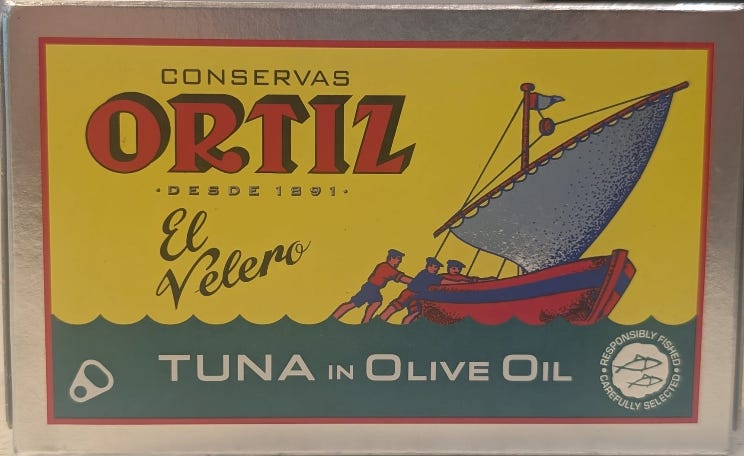

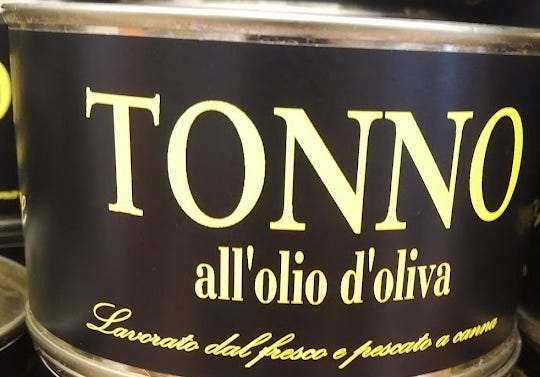
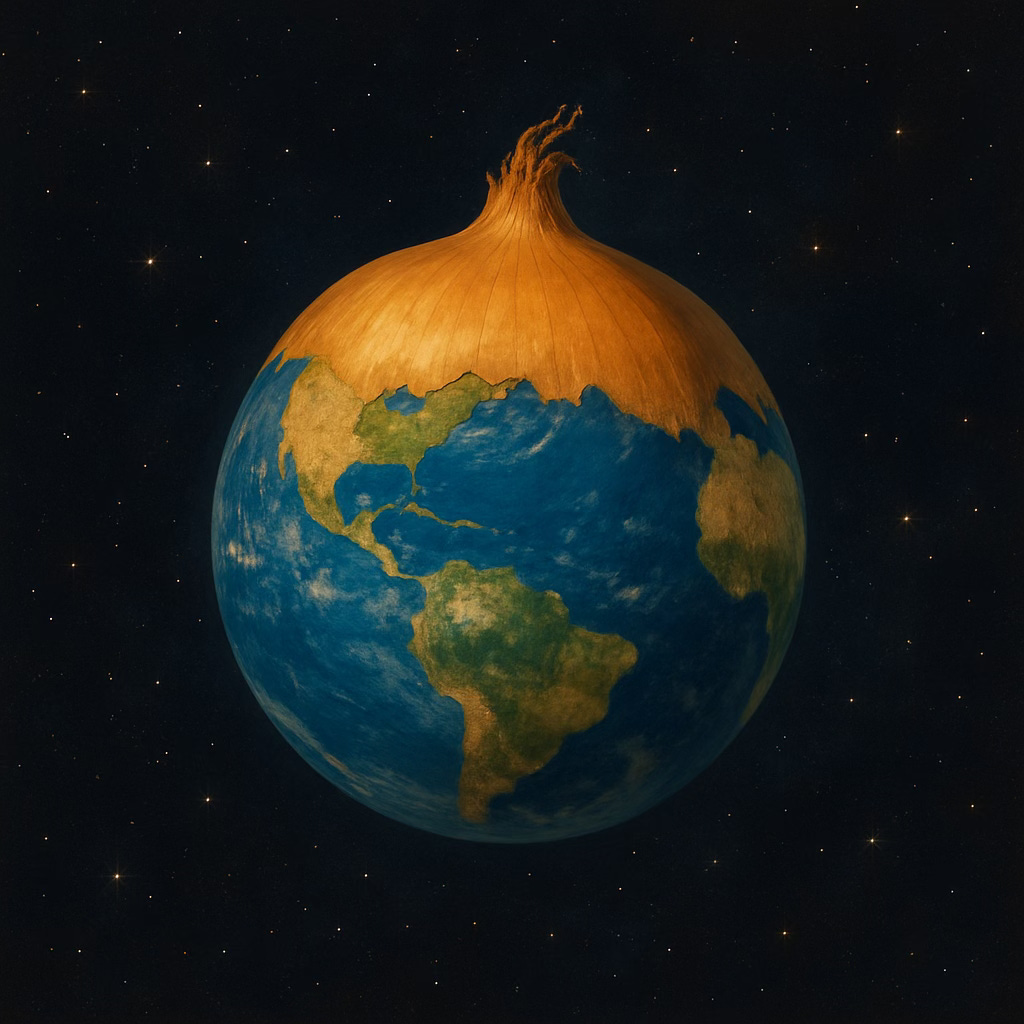
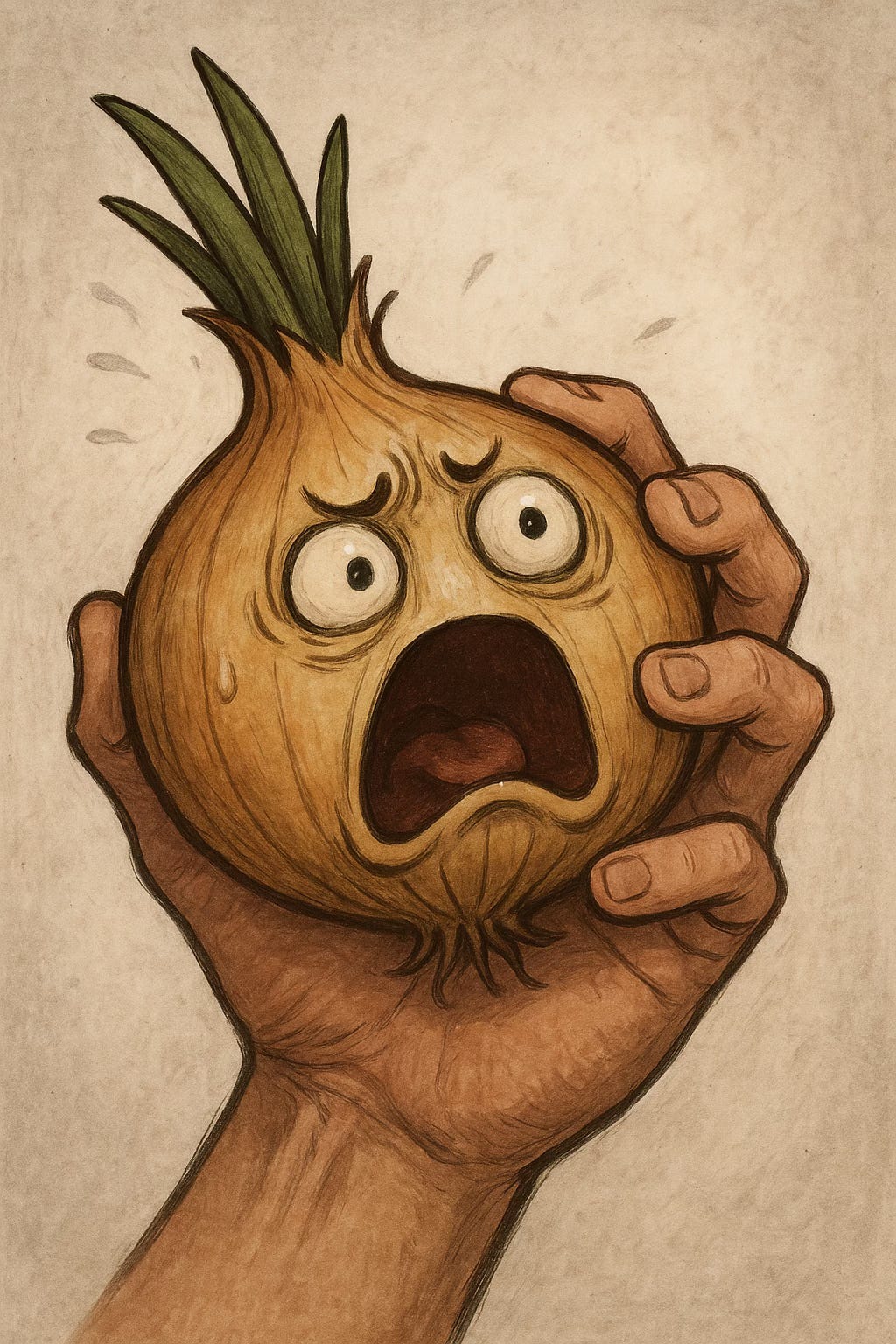
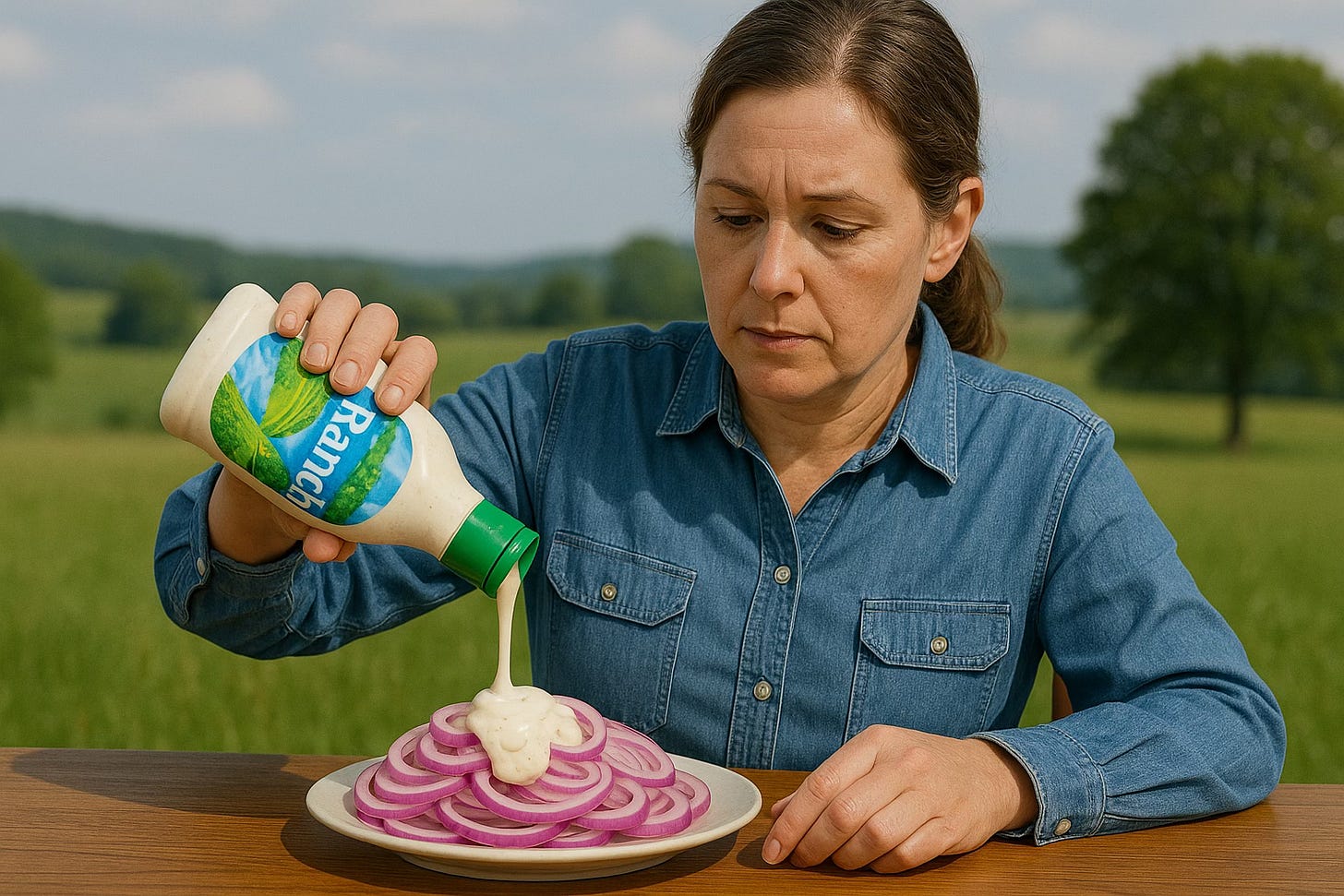


Now that you mention it, you're right!
As a Home Economist, my forever position about onions was that the more they made you cry, the better taste they would have when caramelized.
But now that I think about it, I haven't cried in a long time and I haven't been using as many onions as I had always used in the past. Not even red onions on my salads.
I have noticed too that onions in general are not as good quality as they used to be either. The rings don't stick together as tightly and slip apart when cut or chopped. Seems like it's happening with all onions these days and not just occasionally.
Thanks for your insight. Guess I'm not loosing it over poor quality onions after all !
Mark, I’m crying, and not from chopping onions. Your piece hits like a Rijnsburger to the sinuses.
It also brought back a memory. When I was 9, visiting family in Calabria, my uncle would walk me through the fields, pull onions straight from the ground, peel off a layer, and eat it raw like it was an apple. I was mortified every time he offered me a bite and prayed he wouldn’t insist. I’ve always loved onions, but that memory spoiled them for me for years. Now, a few years later, 40++++ something, to be "precise", I actually miss those onions. You’re right, there’s something off about today’s onions. Then again, watching the world news, maybe there’s something wrong with the entire world including onions.
Great post.